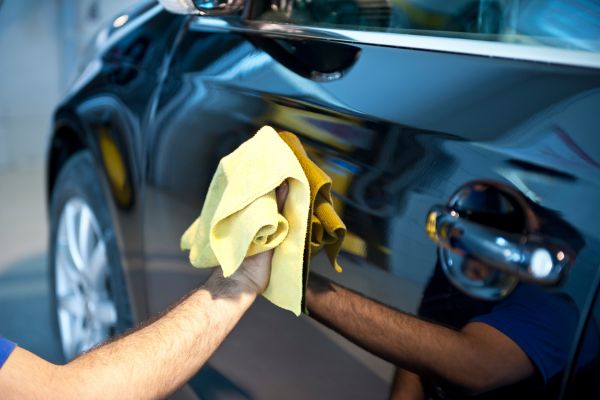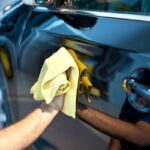Let’s be real—there’s something deeply satisfying about seeing your car gleam under the sunlight, right? That mirror-like shine doesn’t just look great; it says a lot about how much you care for your ride. But here’s the thing—keeping that glossy finish takes more than an occasional wash. You’ve got to know the right waxing and polishing tips if you want your car to keep turning heads.
Why Waxing and Polishing Matter
Before we get into the good stuff, let’s clear this up: waxing and polishing aren’t the same. Polishing helps remove imperfections like swirl marks, scratches, and oxidation. It smooths the surface, bringing back that showroom luster. Waxing, on the other hand, adds a protective layer that shields your paint from UV rays, water spots, and road grime.
Think of polishing as giving your car a facial, and waxing as applying the sunscreen. You really need both to keep that finish glowing.
When to Polish Your Car
You don’t need to polish every week—or even every month. Over-polishing can actually thin the paint layer. The ideal frequency is about twice a year, unless your car spends a lot of time outdoors.
A quick test: run your fingers gently across the surface after washing. If it feels rough or you can see dull patches, that’s your cue to polish. Another sign? When water doesn’t bead up anymore, it’s time to refresh the surface.
Choosing the Right Polish
There’s a sea of products out there, and not all are created equal. Here’s a little insider trick—always choose a polish that matches your paint’s condition.
If your paint looks pretty good, a light or finishing polish will do the job. Got deeper scratches or dullness? Go for a medium or heavy-cut polish, but be careful. You don’t want to eat away too much of that clear coat. And, let’s be honest, if you’re not confident, it’s better to let a pro handle it.
Prepping Before You Polish
Polishing a dirty car is like brushing your teeth without rinsing your mouth first—it just doesn’t make sense. Start by giving your car a good wash using a pH-balanced shampoo. Dry it thoroughly with a microfiber towel.
If you really want to do it right, use a clay bar to remove embedded contaminants. You’d be amazed at how much junk sticks to your paint that a simple wash can’t remove.
How to Polish the Right Way
Now, this is where patience pays off. You can polish by hand or with a dual-action machine. If you’re new to this, a dual-action polisher is a lifesaver—it’s powerful but still safe for beginners.
Apply a small amount of polish to your pad and work in small sections. Move the polisher slowly in overlapping passes. Don’t rush it. Wipe off the residue with a clean microfiber towel and take a step back. You’ll literally see the difference as that dull paint starts to come alive.
Waxing 101: The Final Layer of Protection
Alright, let’s talk about the star of the show—waxing. This step is what seals in your hard work. Waxing doesn’t just make your car look like a mirror; it protects the paint from the elements, bird droppings, and even UV rays that cause fading.
You can use natural carnauba wax or synthetic wax (also called paint sealant). Carnauba gives that deep, wet shine that’s unbeatable, but it doesn’t last as long as synthetic. Sealants, on the other hand, can last for months—perfect for those who don’t want to wax often.
Applying Wax Like a Pro
Here’s one of the best waxing and polishing tips—less is more. Seriously, slathering wax on thick won’t make your car shinier; it just wastes product and makes it harder to buff off.
Apply a thin, even coat using an applicator pad, working one section at a time. Let it haze slightly, then buff it out with a clean microfiber towel. You’ll know you’ve nailed it when your reflection looks crisp and smooth.
Timing and Weather Matter
This might sound trivial, but the environment you work in makes a big difference. Avoid waxing or polishing under direct sunlight or on a hot surface. The heat can cause the products to dry too quickly, leaving streaks and residue behind. Early morning or late afternoon, in a shaded spot, is perfect.
And if it’s humid or about to rain—skip the waxing session. Moisture interferes with how well the wax bonds to the paint.
Maintain That Shine
After you’ve spent hours perfecting your car’s look, don’t let it fade away too soon. Wash your car regularly using a wax-safe shampoo, and dry it properly. Avoid harsh detergents—they strip away your wax layer faster than you think.
You can also use quick-detailer sprays between washes. They add an extra pop of gloss and extend your wax’s lifespan.
Common Mistakes to Avoid
One of the most overlooked waxing and polishing tips is knowing what not to do. Over-polishing is a big one, as it wears down your clear coat. Using dirty applicators or towels? That’s another killer mistake—it can cause swirl marks right after you’ve polished.
And please, skip circular motions when applying wax or polish. Instead, use straight lines—horizontal on the sides and vertical on the hood and trunk. It reduces the visibility of any micro-scratches that might happen.
The Real Secret: Consistency
Here’s the truth—your car doesn’t need professional detailing every month. What it needs is consistent care. Stick to a routine that fits your lifestyle. A quick wash and detail spray weekly, and a full polish and wax every few months, can keep your car’s finish looking flawless for years.
Wrapping It Up
At the end of the day, taking care of your car’s paint is more than just vanity—it’s preservation. A well-maintained finish not only looks stunning but also protects the resale value of your car. These waxing and polishing tips aren’t complicated, but they do require a little effort and consistency.
So next time you see that dull patch or water spots starting to show, don’t wait. Grab your polisher, your wax, and get to work. Because let’s be honest—nothing feels better than stepping back and seeing your car shine like it just rolled out of the showroom.
That’s what real car love looks like.







